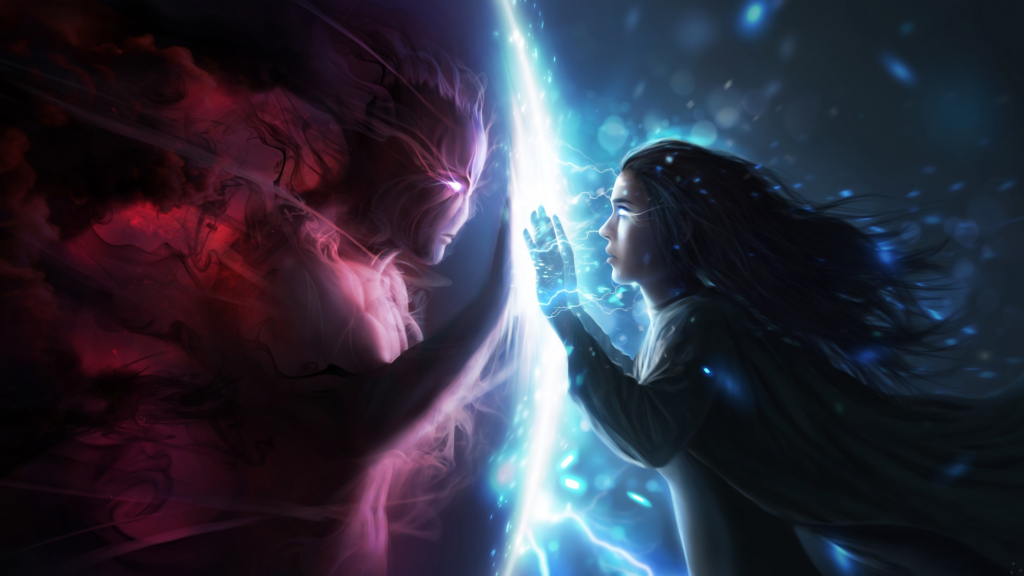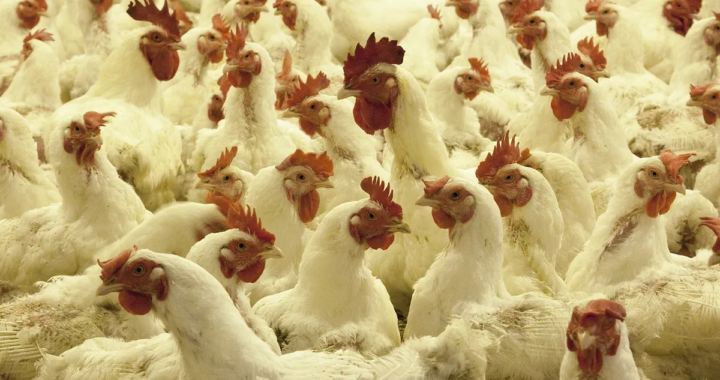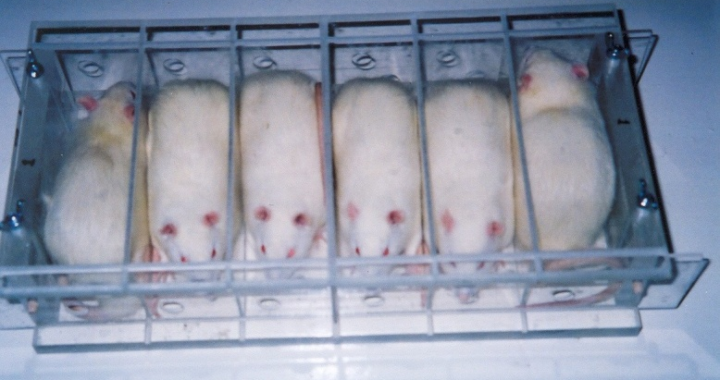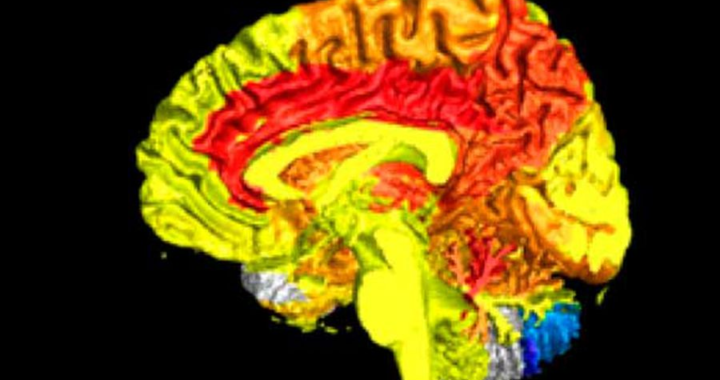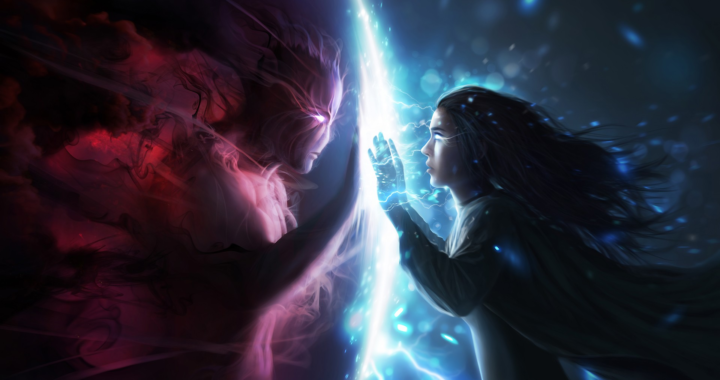You must see with eyes unclouded by hate. See the good in that which is evil, and the evil in that which is good. Pledge yourself to neither side, but vow instead to preserve the balance that exists between the two.
This post is part of a series. Advance to Part II.
Introduction
Table of Contents
The terms ‘right-wing’ and ‘left-wing’ originated in the National Assembly of France during the French Revolution in 1789, when supporters of the king migrated to the right side of the legislative chamber, and supporters of the revolution seated themselves to the left side. When we study history, we can find that this dichotomy long predates the French Revolution: in ancient Greece (Sparta vs. Athens), in Rome (Optimates vs. Populares), in ancient Judaism (Sadducees vs. Pharisees), in Vedic India (the caste system, i.e. Sudra vs. the higher castes), and even in the social classes of the Qin Dynasty in China (landlord/merchant vs. craftsman/peasant). Philosophers have created their own descriptions: Marx’s famous bourgeoisie/proletariat dialectic, Nietzsche’s master morality and slave morality, and Crenshaw’s intersectionality all recapitulate the same polarized dichotomy.
There exists an entrenched academic view that politics is primarily a story about collective group power–the oppressor classes vs. the oppressed classes. This originated in the historical dialectic method of Karl Marx–“a ruthless criticism of everything existing”. Today, thousands of scholars are employed to critically read texts, recontextualize them in terms of a class power dialectic critical interpretation, and extract hidden class power subtexts from in between the author’s original words.
But this Durkheimian theory of social facts has never withstood the confounding evidence omnipresent in our discourse. For example, consider the prevalence of wealthy heirs amongst the most radical leftists globally, starting with Marx’s own benefactor Friedrich Engels. Or the wealthy patrons that supported Jean-Jacques Rousseau’s odyssey across Europe as he progressively wore out his hosts’ welcome. Consider the unironic use of the term ‘populism’, when the working poor inexplicably align behind a brazenly elite strongman who promises to restore righteousness. Marx contemptuously portrayed the ‘lumpenproletariat’ as fools unaware of what their opinions ought to be, anesthetized by the ‘opiate’ of religion designed by the elite classes. Something more sophisticated is going on than social theorists can explain.
History is littered with epochs in which humans are swept up into the madness of revolutionary and reactionary camps, and make uncivil war upon each other. Jesus Christ sidestepped and redirected an attempt to make him choose a side with his retort, ‘Render to Caesar the things that are Caesar’s; and to God the things that are God’s.’, yet comically strained attempts are still made today to retrospectively recruit Him into the fracas. J. Michael Straczynski’s underrated TV series Babylon 5 mythologized this conflict by imagining human history under the secret influence of two conflicting alien races, the Vorlons (who asked the question, “who are you?”) and the Shadows (who asked the question, “what do you want?”). He poked fun at it in one episode involving a race called the Drazi, who divided up into two warring ‘purple’ and ‘green’ factions every five years:
But where does this human impulse to divide up into honor and justice factions come from?
NYU social psychologist Jonathan Haidt and collaborators have investigated moral values and political ideologies, and proposed a model where the left-wing is oriented around broad social connections, the right-wing is oriented around tight social connections, and libertarians are instead oriented around individualism. This feels like a fuzzy glimpse at truth, but the investigative tools available to the psychologist pretty much stop at these abstract nouns.
I propose that the real truth is this: these group perceptions only exist as emergent phenomena due to the common architecture of vertebrate brain, and the life experiences that leave their imprints upon that brain ‘wetware’. There exist no imaginary mass social constructs or historical forces, revealed by reason or the ritual torture and sacrifice of data. Political phenomena are emergent phenomena, not ersatz gods whose worship needs to be indoctrinated. If you can master this truth, you actually can choose your own reality, just as ceramic-jar-housed Diogenes earned the peerage of Alexander the Great. Wary of the dark creatures that await us, let us take a deep, dispassionate dive into the politiques and their critiques.
The Two Spirits
Oxytocin, and its lesser-known sibling vasopressin, are popularly associated with social bonding. They are far more subtle and sophisticated than that.
If there is an overarching claim that I am presenting, it is this:
Oxytocin is the energy of species progress and the Spirit of Community. Vasopressin is the energy of self-actualization, and submission to and rising up towards the Spirit of Dominion.
Let’s elaborate upon this.
Spirit of Community
- Oxytocin
- Species preservation
- Promote parasympathetic nervous system
- Left hemisphere
- Feminine
- Communion
- Humanity
- Affection
- Verbal
- Bottom up and detailed
Spirit of Dominion
- Vasopressin
- Species evolution
- Control sympathetic nervous system
- Right hemisphere
- Masculine
- Dominion
- Family
- Growth
- Visual
- Top-down and laterally-connected
Summary of the properties of the two spirits
Parasympathetic/Sympathetic
Oxytocin promotes the parasympathetic nervous system, while vasopressin controls the sympathetic nervous system. These autonomic nervous systems, that tend to oppose each other, have long carried the epithets of ‘feed and breed’ and ‘fight or flight’, respectively. Note that promote and control are not symmetrical operations.
Left Brain/Right Brain
Similarly, the left hemisphere promotes the parasympathetic nervous system, while the right hemisphere controls the sympathetic nervous system. This is similar to oxytocin and vasopressin, respectively, and each hemisphere tends to be more influenced by each energy.
Feminine/Masculine
Oxytocin plays a more prominent behavioral role in females, while vasopressin plays a more prominent behavioral role in males. However, oxytocin plays a critical supporting role in men in sexual attraction and parenting, while vasopressin plays a critical role in bonding and parenting in women. Everything here is shades and balance.
The left hemisphere is more critical to female behavior, while the right hemisphere is more critical to male behavior. Damage to the left hemisphere in females and right hemisphere in males is impairing, while the opposite is less noticeable. As this study of the relative performance on a psychological instrument called the Iowa Gambling Test concluded:
Men with right‐side lesions and women with left‐side lesions displayed moderate to severe impairments in social conduct, emotion, and decision making. Women with right‐side lesions and men with left‐side lesions showed mild or no impairments in all three domains.
Communion/Dominion
Oxytocin motivates reaching out into the world for sexual partners, while vasopressin motivates parental care and defense of the home territory and children. This is partly why we associate sexual liberalization and ‘family values’ with left- and right-wing; the other part, as we shall see later, involves the left and right amygdala.
Affection/Growth
Oxytocin and vasopressin modulate how we view child education. In a fascinating study, high oxytocin parents showered their children with validating affection, while high vasopressin parents showed their children new objects to learn about. Mothers tended to display the oxytocin parenting style, while fathers tended to display the vasopressin parenting style, but within-sex variations showed that the hormones, not sex per se, promoted the parenting behaviors. We see disagreements about these educational priorities play out in divisive school board meetings.
Oxytocin and Vasopressin Side-by-Side
Oxytocin promotes desire for communion with our ingroup, but importantly it also increases our resentment of outgroups, particularly those outgroup members who we believe are harming ingroup members. Oxytocin motivates us to reach out to people, and to wish to be a part of something greater than ourselves. Oxytocin makes us want to have families. Oxytocin output is increased when we are under chronic social stress. This is one of the sources of political polarization for both right and left. It is the foundation of patriotism, of internationalism, of ingroups and outgroups, and the Lacanian big Other.
Oxytocin is a feminine energy.
Shadow: Oxytocin is the mob hormone.
Vasopressin promotes remembering individual people we meet and how we relate to them. It inspires territoriality, pair bonding, loyalty, self-defense, relative social dominance, and risky mission commitments (think of the ‘Fellowship of the Ring’ in Tolkien’s The Lord of the Rings, or the military espirit de corps). Vasopressin makes us want to protect our families. Vasopressin output is increased when we are under acute social stress. Vasopressin closes us off from strangers, but promotes the entanglement of self and close others as in family and friendship. Vasopressin mediates social hierarchies and the Lacanian little other.
Vasopressin is a masculine energy.
Shadow: Vasopressin is the gang hormone.
Men Are From Vasopressin, Women Are From Oxytocin
This ingroup vs. personal bond mediated by oxytocin and vasopressin, respectively, shows up in the perennial miscommunications between women and men. To a woman, the romantic ‘relationship’ is a distinct group entity that encompasses herself and her partner, the seed of a potential new little society of her own, that a woman is loyal to (vasopressin) and is concerned with nurturing (oxytocin), that is indestructible unless broken by emotional betrayal of the relationship (a female-specific oxytocin-mediated temporoparietal junction response). But for men, the romantic ‘relation’ is an individual bond (vasopressin), the primary source of spiritual healing and soul connection that a man reciprocates out of honor, that is indestructible unless broken by acts of sexual betrayal (a male-specific vasopressin-mediated hypothalamic response).
This will be covered in more detail in future articles.
Crowding is the Cause of Urban Left and Rural Right
Solitude increases vasopressin expression, especially in males. Overcrowding increases stress and oxytocin production, which helps organisms tolerate and even enjoy being part of a crowd. This is why urban areas are more left-wing, while suburbs and rural areas are more right-wing.
The balance of oxytocin and vasopressin also relate to young adults’ typical progression from expanding their social circles in their 20s (oxytocin) to withdrawing themselves into nuclear families (vasopressin) in their 30s and beyond. This is also part of why people tend to become “more conservative” as they age–high oxytocin is replaced by increasing vasopressin. Recognition of this shifting tendency as a phenomenon is why some more radically progressive leftists target the nuclear family for dismantlement.
Guanyin vs. Sancus
In neuromythography, oxytocin is assigned to Guanyin, the Chinese Buddhist goddess of affective empathy. Guanyin’s name means “Observing the Sounds of the World,” indicating her compassionate ability to listen for pleas of help so she can come to the aid of the needy. This represents oxytocin’s role in empathy and as the Spirit of Community.
Vasopressin is assigned to Sancus, the Roman god of trust, truths, sanctity, and oaths. This represents vasopressin’s role in self-actualization and rising up towards the Spirit of Dominion.
It should be obvious by now that neither of these complementary spirits is the correct one.
OTR, V1a and V1b Receptors
Neurotransmitters are only half of the story. Each neurotransmitter is received into a cell via receptors expressed on the cell surface. The type of receptor changes how the cell processes the neurotransmitter “message”, and the differences between these receptor types ultimately shows up in behavior.
There exist three cell receptors for oxytocin and vasopressin: the oxytocin receptor OTR, and two vasopressin receptors v1a and v1b. It is important to know that the two neurotransmitters oxytocin and vasopressin bind with all three of these receptors, so there are a total of six different potential effects.
Oxytocin receptors (OTR) are increased in alpha males and females, both as a result of parenthood and increasing social rank.
Vasopressin v1a receptors are increased in male rodents with each successive victory over an intruder. v1a receptors are increased in pair-bonded females, reducing their interest in finding new mates.
Vasopressin v1b receptors are increased in male rodents with each successive submission to an intruder. v1b receptors are increased in nursing females, and are necessary for normal maternal childrearing behaviors.
The Bruce effect is a phenomenon that occurs in rodents in which a pregnant female will spontaneously abort her pregnancy when exposed to the scent of a novel male. This effect is mediated through her v1b receptors, suggesting an instinctive response to the presence of a change in the local male hierarchy, or to a threat that lessens the likelihood of successful young-raising. This shines a new light upon male territorial defense against male intruders. The Bruce effect has been proposed, but is not universally accepted, in other mammals including humans.
v1a and v1b thus form an oppositional pair, with OTR standing on its own. Importantly, these receptors have fundamentally different behavioral properties in males and females.
Tara, Morrigan, and Mordred
OTR
The OTR is assigned to Tara, a complex Hindu/Buddhist goddess. The Buddhist version is known as the “mother of liberation”. The Hindu Tara has a taste for demon blood, but is maternal and breathes life into the world. She responds to the energies of Guanyin and Sancus.
v1a
The v1a receptor is assigned to Morrigan, the Celtic “phantom queen”. The Morrígan is mainly associated with war and fate, especially with foretelling doom, death or victory in battle. She incites warriors to battle and can help bring about victory over their enemies. The Morrígan encourages warriors to do brave deeds, strikes fear into their enemies. She responds to the energies of Guanyin and Sancus.
v1b
The v1B receptor is assigned to Mordred, the disrespected and rebellious son of King Arthur in the Arthurian legend. This represents submission, seething rebellion, and defense of the downtrodden. He responds to the energies of Guanyin and Sancus.
It should be apparent that v1a is the ‘oppression’ and v1b is the ‘oppressed’ motif. Or v1a is the ‘righteous’ and v1b is the ‘weak degenerate’. The interpretation may depend upon the current v1a/v1b balance of the interpreter. OTR is the group identification amplifier, that bonds us into ingroups, and calls forth Ares in the extreme.
A Simple Receiver Biopolitical Model
- The international socialist is the amplification of v1b (Mordred) and OTR (Tara).
- The nationalist is the amplification of v1a (Morrigan) and OTR (Tara).
- The libertarian is the amplification of v1a (Morrigan) and v1b (Mordred).
- The national socialist is the amplification of v1a, v1b, and OTR together.
This is of course a vast oversimplification, as it ignores the difference brain areas involved, and can be criticized as veering into a bad kind of biological essentialism. The key takeaway here is that these forces are to be balanced, not unbalanced.
This post is part of a series. Advance to Part II.
